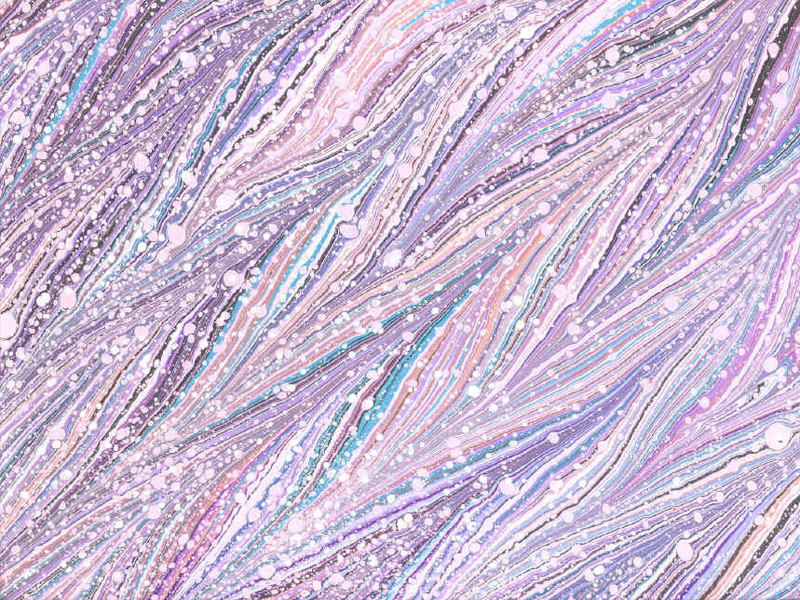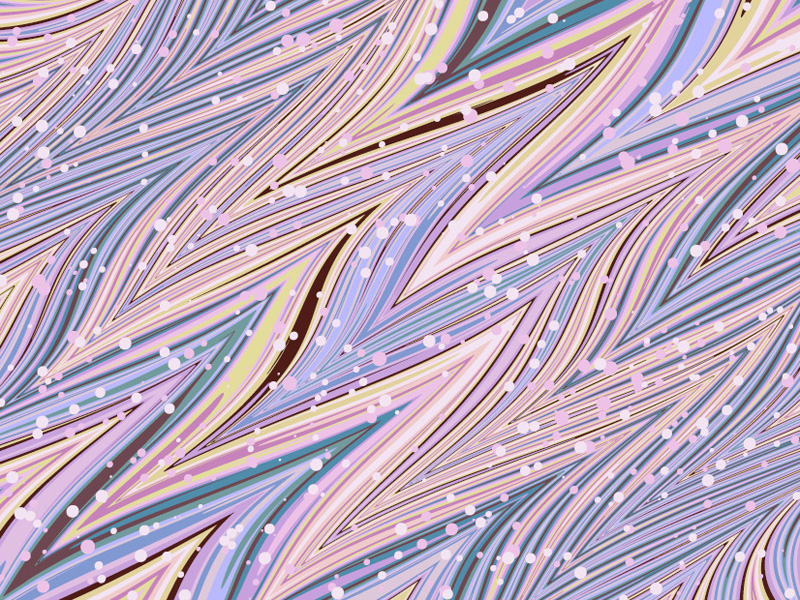Mathematical Marbling
IEEE Computer Graphics and Applications, 2012, 32(6): 26-35.
Shufang Lu, Aubrey Jaffer, Xiaogang Jin, Hanli Zhao, and Xiaoyang Mao
Comparison between a real-world marbling pattern and our simulation result: (a) a real-world marbling image, (b) our simulation result.

Application to scene decorations: (a) the vase,
book and tablecloth decorations, (b) window design, and (c) wallpaper,
upholstery and carpeting in room decorations.
Abstract
Marbling is the art of creating stone-like or intricate abstract decorations from liquid inks floating on water or gel. Although the fluid dynamics of marbling processes can be simulated, we introduce a mathematical approach with closed-form expressions. Our approach improves control, ease of implementation, parallelism, and speed, which enables real-time visual feedback as well as the creation of vivid flowing animations. Designs can be started from a blank sheet or raster images and videos. When started from a blank sheet, our approach can produce compact resolution-independent vector outputs. The transforms for our marbling operations all have inverse transforms. Forward application is used to generate compact resolution-independent vector-based output; inverse application is used to generate pixel-based output. In both cases, the closed-form expressions preserve the quality and sharpness of the designs. The efficiency and effectiveness of our method are demonstrated via extensive comparisons with existing digital marbling techniques. We also show various applications including cyclic texture tiling, scene decoration, surface detail rendering for 3D objects, image editing, and interactive video processing.
Download
| PDF, 6.2MB | Video, 21.2MB |
Bibtex
@article{10.1109/MCG.2011.51,
author = {Shufang Lu and Aubrey Jaffer and Xiaogang Jin and Hanli
Zhao and Xiaoyang Mao},
title = {Mathematical Marbling},
journal ={IEEE Computer Graphics and Applications},
volume = {32},
issn = {0272-1716},
year = {2012},
pages = {26-35},
doi = {http://doi.ieeecomputersociety.org/10.1109/MCG.2011.51},
publisher = {IEEE Computer Society},
address = {Los Alamitos, CA, USA},
}

